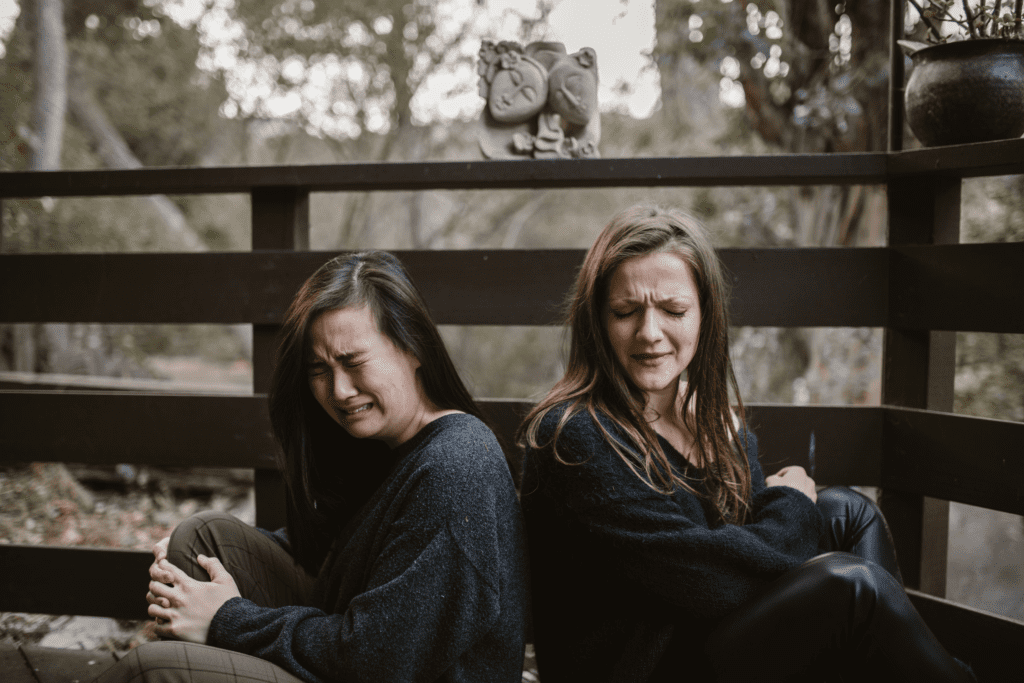Last updated on December 23rd, 2024 at 10:06 am
- 1. The Scope of PTSD: Beyond Military Service
- 2. The Timeline of PTSD: Delayed Onset is Possible
- 3. PTSD and Personal Strength: Dispelling the Weakness Myth
- 4. The Prevalence of PTSD: Not Everyone Develops the Disorder
- 5. The Diversity of PTSD Symptoms: A Spectrum of Experiences
- 6. PTSD and Aggression: Separating Fact from Fiction
- 7. The Persistence of PTSD: Understanding the Need for Treatment
- 8. The Treatability of PTSD: Hope for Recovery
- PTSD and Risk Factors: Who Is More Vulnerable?
- Biological Factors and PTSD
- The Difference Between PTSD and Acute Stress Disorder
- Types of Trauma and Their Profound Impact
- PTSD and Avoidance Symptoms
- Addressing PTSD and Reactivity Symptoms
- PTSD and Co-occurring Mental Conditions
- Cognitive Therapy and Cognitive Restructuring in PTSD Treatment
- PTSD and Different Forms of Treatment
- PTSD and Exposure Therapy: Overcoming Traumatic Memories
- PTSD and Military Personnel: Addressing Wartime Trauma
- PTSD and Flashbacks: Understanding Intrusive Memories
- PTSD and Mindfulness Practices
- PTSD and Anxiety: Coping Strategies for Stress Reduction
- PTSD and the Importance of Social Support Systems
- PTSD and Mental Health Professionals: Seeking Help
- PTSD and Sleep Disorders: Addressing Disrupted Rest
- PTSD and Emotional Numbness: Coping With Blunted Emotions
- PTSD and Substance Use Disorder: A Dual Challenge
- PTSD and Physical Abuse: The Lingering Effects
- PTSD and Life-threatening Illnesses: A Less Acknowledged Source
- PTSD and Positive Outcomes: The Potential for Recovery
- PTSD and Mental Imagery: The Role of Visualization in Treatment
- PTSD and Grounding Techniques: Staying in the Present
- PTSD and the Role of Family Therapy
- PTSD and Diet: Nutritional Support for Mental Health
- PTSD and Physical Symptoms: The Body’s Reaction to Trauma
- PTSD and Therapy Sessions: Engaging in Continuous Support
- PTSD and Addiction Symptoms: Overlapping Challenges
- PTSD and the U.S. Department of Veterans Affairs: Comprehensive Care for Veterans
- PTSD and the Impact of Trauma Memory
- PTSD and Coping Strategies for Everyday Life
- PTSD and Relaxation Techniques: Easing Tension
- PTSD and Quality of Life: Striving for Improvement
- PTSD and Bipolar Disorder: Addressing Comorbidities
- PTSD and Physical Reactions: The Body’s Natural Response
- PTSD and American Adults: Understanding Prevalence
- PTSD and Medical Treatment: The Role of Medications
- PTSD and Acute Symptoms: Early Warning Signs
- PTSD and Life Events: Triggering Factors
- PTSD and Blaming: The Role of Self-Perception
- PTSD and Compassionate Care: Providing Empathy and Understanding
- PTSD and Behavioral Therapy: Changing Patterns
- PTSD and Online Resources: Seeking Support Remotely
- PTSD and Family History: Genetic Links to Trauma Response
- PTSD and Dangerous Events: The Impact of Trauma Exposure
- PTSD and Trauma-focused Therapies: Specialized Interventions
- PTSD and Hypervigilance: Constant Awareness
- PTSD and Intrusive Thoughts: Managing Unwanted Memories
- PTSD and Life-threatening Events: Impact on Mental Health
- PTSD and Quality of Life: Long-term Recovery Goals
- PTSD and Mental Strength: Recognizing Resilience
- PTSD and Social Engagement Disorder: The Need for Connection
- PTSD and Medical Professionals: The Importance of Specialized Care
- PTSD and Spending Time Outdoors: A Natural Form of Healing
- PTSD and Compassionate Mental Health Care: Tailored Approaches
- Conclusion: Fostering Understanding and Support
- Frequently Asked Questions
- What Is PTSD And How Does It Differ From Other Mental Health Conditions?
- Can PTSD Develop From Non-Combat Related Traumas?
- Is PTSD A Sign Of Mental Weakness Or Character Flaw?
- Can PTSD Develop Immediately After A Traumatic Event Or Does It Always Have A Delayed Onset?
- Are Flashbacks And Nightmares The Only Symptoms Of PTSD?
- Can Children Develop PTSD Or Is It Only An Adult Condition?
- Is PTSD A Lifelong Condition Or Can It Be Cured?
- Does Everyone Who Experiences A Traumatic Event Develop PTSD?
- Can PTSD Occur From A Single Traumatic Event Or Does It Require Repeated Exposure To Trauma?
- Is PTSD Only Related To Fear-Based Memories Or Can It Involve Other Emotions?
- Can PTSD Coexist With Other Mental Health Conditions?
- Is Medication The Only Effective Treatment For PTSD?
- Can PTSD Symptoms Fluctuate Over Time Or Are They Always Constant?
- Does Having PTSD Mean A Person Is Dangerous Or Violent?
- Can PTSD Affect Physical Health In Addition To Mental Health?
- Is PTSD A Modern Phenomenon Or Has It Existed Throughout History?
- Can PTSD Be Prevented After Experiencing A Traumatic Event?
- How Does PTSD Affect Relationships And Social Functioning?
- What Role Does Resilience Play In PTSD Development And Recovery?
- Is PTSD Only Experienced By Veterans?
- Can PTSD Symptoms Appear Years After The Traumatic Event?
- Is PTSD A Sign Of Mental Weakness?
- Are Only Extreme Trauma Survivors At Risk Of PTSD?
- Does Everyone With PTSD Have Flashbacks?
- Can Children Develop PTSD?
- Is Avoidance A Symptom Of PTSD?
- Are PTSD And Anxiety Disorder The Same?
- Can PTSD Be Cured Completely?
- Does Exposure Therapy Work For PTSD?
- Are People With PTSD Dangerous?
- Can Medication Help In Managing PTSD?
- Are There Different Types Of PTSD?
- Does PTSD Only Affect Mental Health?
- Can PTSD Develop After Witnessing Someone Else’s Trauma?
- Does Having PTSD Mean I Need To Take Time Off Work?
- Does Family History Increase The Risk Of PTSD?
- Is PTSD The Same As Depression?
- Can Cognitive Behavioral Therapy (CBT) Help Treat PTSD?
- Are PTSD Symptoms The Same For Everyone?
Post-traumatic stress disorder (PTSD) is a complex mental health condition that affects millions of people worldwide. Despite its prevalence, many misconceptions persist about PTSD, its causes, symptoms, and treatment options.
This article aims to shed light on some of the most common myths surrounding PTSD and provide accurate information to foster a better understanding of this challenging disorder.
Let’s Uncover the 8 Common Myths & Facts About PTSD, its effects, and the truth that can help reduce stigma.
1. The Scope of PTSD: Beyond Military Service
One of the most pervasive myths about PTSD is that it exclusively affects military veterans. While it’s true that combat exposure can lead to PTSD, the reality is that this condition can affect anyone who experiences, witnesses, or has second-hand exposure to a traumatic event.
Trauma comes in many forms and can impact individuals from all walks of life. Some examples of traumatic events that may lead to PTSD include:
– Natural disasters
– Serious accidents
– Physical or sexual assault
– Childhood abuse
– Domestic violence
– Terrorist attacks
– Severe illness or medical procedures
It’s important to recognize that PTSD can affect anyone, regardless of age, gender, or profession. While certain groups may be at higher risk due to increased exposure to traumatic events, no one is immune to the potential impact of trauma on mental health.
2. The Timeline of PTSD: Delayed Onset is Possible
Another common misconception is that PTSD symptoms always appear immediately after a traumatic event. In reality, the onset of PTSD can vary greatly from person to person. While some individuals may experience symptoms shortly after trauma, others may not develop PTSD until months or even years later.
Delayed-onset PTSD is a recognized phenomenon in which symptoms emerge at least six months after the traumatic event. Research suggests that approximately 25% of PTSD cases involve delayed onset. Several factors may contribute to this delay, including:
– Changes in life circumstances that trigger memories of the trauma
– Accumulation of stress over time
– Gradual erosion of coping mechanisms
– Neurobiological changes in the brain’s stress response system
Understanding the potential for delayed onset is crucial for both individuals who have experienced trauma and healthcare professionals. It highlights the importance of long-term monitoring and support for those who have been exposed to traumatic events, even if they initially appear to be coping well.
3. PTSD and Personal Strength: Dispelling the Weakness Myth
One harmful myth that persists is the notion that developing PTSD is a sign of weakness. This misconception not only stigmatizes those suffering from the disorder but also demonstrates a fundamental misunderstanding of the biological and psychological processes involved in PTSD.
PTSD is a complex disorder that results from changes in brain structure and function following trauma. These alterations affect areas of the brain responsible for processing emotions, memories, and stress responses. Some key neurobiological changes associated with PTSD include:
– Hyperactivity in the amygdala, the brain’s fear center
– Reduced activity in the prefrontal cortex, which regulates emotions
– Alterations in the hippocampus, affecting memory processing
– Dysregulation of stress hormones, particularly cortisol
These changes are not a reflection of personal strength or character but rather a normal biological response to abnormal circumstances. Just as physical injuries can occur regardless of a person’s fitness level, psychological trauma can affect anyone, regardless of their mental fortitude.
4. The Prevalence of PTSD: Not Everyone Develops the Disorder
While it’s true that many people experience traumatic events in their lifetime, not everyone who experiences trauma will develop PTSD. The prevalence of PTSD in the general population is estimated to be around 6-8%, although this can vary depending on factors such as geographical location, cultural context, and exposure to specific types of trauma.
Several factors may influence an individual’s likelihood of developing PTSD after a traumatic event:
– The nature and severity of the trauma
– Previous exposure to traumatic events
– Personal history of mental health issues
– Genetic predisposition
– Social support systems
– Coping strategies and resilience
It’s important to note that experiencing symptoms of acute stress following a traumatic event is normal and does not necessarily indicate PTSD. For a diagnosis of PTSD, symptoms must persist for at least one month and significantly impair daily functioning.


5. The Diversity of PTSD Symptoms: A Spectrum of Experiences
PTSD is a complex disorder with a wide range of potential symptoms. While there are common threads in how PTSD manifests, it’s crucial to understand that the experience of PTSD can vary significantly from person to person.
The Diagnostic and Statistical Manual of Mental Disorders (DSM-5) outlines four main symptom clusters for PTSD:
1. Intrusion symptoms: Unwanted memories, nightmares, or flashbacks related to the trauma
2. Avoidance: Efforts to avoid thoughts, feelings, or reminders associated with the traumatic event
3. Negative alterations in cognition and mood: Persistent negative beliefs, distorted blame, diminished interest in activities, feelings of detachment
4. Alterations in arousal and reactivity: Irritability, reckless behavior, hypervigilance, exaggerated startle response, difficulty concentrating or sleeping
Within these clusters, individuals may experience a unique combination of symptoms. Some may struggle primarily with nightmares and flashbacks, while others might experience intense anxiety and hypervigilance. The severity and frequency of symptoms can also vary widely.
6. PTSD and Aggression: Separating Fact from Fiction
A persistent myth surrounding PTSD is that individuals with the disorder are inherently violent or dangerous. This misconception can lead to stigmatization and social isolation of those struggling with PTSD, potentially exacerbating their symptoms and hindering recovery.
While it’s true that some individuals with PTSD may experience increased irritability or angry outbursts, it’s important to understand that:
– Aggression is not a diagnostic criterion for PTSD
– The majority of people with PTSD are not violent
– When aggression does occur, it’s often a manifestation of hyperarousal symptoms rather than intentional violence
Factors that may contribute to aggressive behavior in some individuals with PTSD include:
– Substance abuse, which is sometimes used as a coping mechanism
– Comorbid mental health conditions
– Lack of appropriate treatment or support
– Environmental stressors
It’s crucial to approach this issue with nuance and compassion, recognizing that individuals with PTSD are more likely to be victims of violence than perpetrators.
7. The Persistence of PTSD: Understanding the Need for Treatment
Another common misconception is that PTSD will simply resolve on its own over time. While it’s true that some individuals may experience a natural reduction in symptoms, for many, PTSD is a chronic condition that requires professional intervention.
Several factors can contribute to the persistence of PTSD symptoms:
– Neurobiological changes in the brain’s stress response system
– Learned avoidance behaviors that reinforce symptoms
– Ongoing life stressors that exacerbate symptoms
– Lack of social support or understanding from others
– Comorbid mental health conditions, such as depression or anxiety
Without appropriate treatment, PTSD can have long-lasting effects on an individual’s quality of life, relationships, and overall functioning. Seeking professional help is often crucial for managing symptoms and developing effective coping strategies.
8. The Treatability of PTSD: Hope for Recovery
Perhaps one of the most damaging myths about PTSD is the belief that it is an untreatable condition. In reality, there are several evidence-based treatments that have shown significant efficacy in helping individuals manage PTSD symptoms and improve their quality of life.
Some of the most effective treatments for PTSD include:
1. Cognitive Behavioral Therapy (CBT): Helps individuals identify and change negative thought patterns and behaviors associated with trauma.
2. Prolonged Exposure Therapy: Involves gradually facing trauma-related memories and situations in a safe environment.
3. Eye Movement Desensitization and Reprocessing (EMDR): A therapy that combines exposure to traumatic memories with guided eye movements to help process traumatic experiences.
4. Cognitive Processing Therapy: Focuses on challenging and modifying unhelpful beliefs related to the trauma.
5. Medication: Certain antidepressants, particularly selective serotonin reuptake inhibitors (SSRIs), can help manage PTSD symptoms.
6. Group Therapy: Provides a supportive environment for individuals to share experiences and coping strategies with others who have experienced trauma.
It’s important to note that treatment effectiveness can vary from person to person, and a combination of approaches may be necessary. Working with a mental health professional to develop a personalized treatment plan is crucial for optimal outcomes.


PTSD and Risk Factors: Who Is More Vulnerable?
PTSD affects people differently based on various risk factors. A family history of mental health disorders, previous life experiences, or exposure to trauma can increase the likelihood of developing posttraumatic stress disorder. Examples of events like physical assault, sexual abuse, or witnessing a violent crime can trigger severe symptoms. Personal assault or abuse in childhood is also a major contributor to PTSD development. These risk factors highlight how a prolonged period of stressful event exposure can lead to PTSD.
Biological Factors and PTSD
Biological factors play a significant role in the development of PTSD. Changes in brain chemistry, particularly in how the human brain responds to trauma, are key elements that contribute to symptoms over time. Neurobiological responses affect areas like the amygdala and prefrontal cortex, responsible for fear and rational thinking. These physical symptoms are part of the body’s natural response to exposure to trauma.
The Difference Between PTSD and Acute Stress Disorder
PTSD and Acute stress disorder share some similarities, but they are not the same. Acute symptoms of stress often arise immediately after a traumatic event, while PTSD involves symptoms persisting for a 12-month period or longer. Acute traumas might lead to PTSD if not properly addressed, underscoring the importance of early mental health care. Adequate treatment during the acute phase can prevent the escalation to PTSD.
Types of Trauma and Their Profound Impact
Different types of trauma experienced, such as childhood trauma, emotional abuse, or wartime trauma, can have a profound impact on one’s mental health. Each type of trauma leads to unique trauma reactions. Combat veterans, police officers, and military personnel, due to repeated exposure to dangerous events, often deal with PTSD and trauma-related disorders. However, trauma also affects civilians facing extreme reactions after violent behavior or life-threatening illnesses.


PTSD and Avoidance Symptoms
Avoidance symptoms are a common symptom of PTSD, where individuals steer clear of reminders of the traumatic event. This can include avoiding certain places, people, or activities linked to bad memories. These behaviors are coping mechanisms but can interfere significantly with normal life. Avoidance symptoms can hinder social engagement disorder recovery, and treatment often focuses on reducing these avoidance behaviors to improve everyday life.
Addressing PTSD and Reactivity Symptoms
Reactivity symptoms include hypervigilance of people and exaggerated physical reactions. PTSD and hypervigilance often coexist, making it challenging for individuals to live a normal life. For example, spending time in crowded places can be overwhelming. Understanding reactivity symptoms and working with medical professionals is crucial for developing effective forms of treatment, helping people regain control over their daily functioning.
PTSD and Co-occurring Mental Conditions
PTSD often coexists with other mental conditions like anxiety disorder, depressive disorder, or substance use disorder. PTSD and substance abuse are interlinked, as individuals might use substances to cope with trauma memories. Additionally, PTSD and depression are common co-occurrences, emphasizing the need for comprehensive treatment. Addressing PTSD and comorbidities is crucial for positive outcomes, ensuring an effective mental health treatment approach.
Cognitive Therapy and Cognitive Restructuring in PTSD Treatment
Cognitive therapy, particularly cognitive restructuring, plays a critical role in PTSD treatment. This approach helps individuals reframe trauma memory, moving away from distressing thoughts that impair their quality of life. Professional treatment, including cognitive behavioral therapy (CBT), focuses on challenging negative beliefs, making cognitive restructuring an active treatment component in the journey toward PTSD recovery.
PTSD and Different Forms of Treatment
PTSD is a treatable condition, and different forms of treatment offer help. Behavior therapy, trauma-focused therapies, and family therapy are part of a comprehensive treatment plan. Family therapy can be especially helpful in improving relationships and support systems, which play a crucial role in mental strength. Access therapy sessions with health care providers ensures that individuals receive adequate care that targets specific PTSD symptoms.
PTSD and Exposure Therapy: Overcoming Traumatic Memories
Exposure therapy is an essential type of intervention that helps individuals confront and process traumatic experiences. PTSD and exposure therapy work together by gradually exposing individuals to trauma-related triggers, helping reduce extreme reactions. Trauma-focused therapies like this are shown to be effective for treating PTSD and improving mental health.
PTSD and Military Personnel: Addressing Wartime Trauma
Military personnel and combat veterans are often at higher risk of PTSD due to wartime trauma. Active duty individuals frequently experience dangerous events that contribute to PTSD. The U.S. Department of Veterans Affairs provides PTSD and mental health support, including evidence-based lifestyle interventions and adjunctive treatment. PTSD and veterans’ care must include therapy sessions tailored to wartime experiences to achieve better outcomes.
PTSD and Flashbacks: Understanding Intrusive Memories
Intrusive memories, such as flashbacks, are a common type of re-experiencing symptoms. PTSD and flashbacks disrupt everyday life by causing individuals to relive trauma unexpectedly. These flashbacks are vivid, almost as if the traumatic event is happening again, impacting both mental health and daily functioning. Trauma-informed care and compassionate care approaches are essential in helping people manage PTSD and reduce the frequency of these distressing symptoms.
PTSD and Mindfulness Practices
Mindfulness practices have been found to significantly benefit PTSD patients by helping them focus on the present moment and reduce reactivity symptoms. PTSD and mindfulness strategies, like breathing exercises and relaxation techniques, help individuals regain control over their emotional responses. Such practices are increasingly being recognized as part of a holistic approach to mental health care.
PTSD and Anxiety: Coping Strategies for Stress Reduction
PTSD and anxiety often coexist, necessitating effective coping strategies. Techniques such as grounding techniques, cognitive therapy, and behavior therapy are used to alleviate symptoms. PTSD and coping strategies help individuals navigate severe symptoms, allowing them to manage PTSD and anxiety without exacerbating other mental illnesses.


PTSD and the Importance of Social Support Systems
A strong support system is vital in the recovery from PTSD. PTSD and support systems, including family, friends, and support groups, offer emotional support and reduce feelings of isolation. Group therapy sessions provide shared experiences and coping mechanisms, which can lead to positive outcomes. PTSD and social support are vital elements in the path toward recovery and maintaining quality of life.
PTSD and Mental Health Professionals: Seeking Help
Seeking help from mental health professionals is crucial for PTSD recovery. PTSD and mental health professionals work together to provide active treatment components, ranging from therapy sessions to medication management. Consulting a health care provider ensures individuals receive personalized and effective mental health treatment, addressing both PTSD and its associated symptoms effectively.
PTSD and Sleep Disorders: Addressing Disrupted Rest
PTSD and sleep disorders often go hand in hand, with individuals frequently experiencing difficulty sleeping, nightmares, and other disturbances. Sleep disruptions can have a detrimental impact on daily functioning and overall quality of life. Mental health professionals can offer cognitive behavioral therapy specifically designed to address sleep-related issues for PTSD patients.
PTSD and Emotional Numbness: Coping With Blunted Emotions
PTSD and emotional numbness are interlinked as individuals may detach themselves from their feelings to protect themselves from pain. This emotional detachment, often a symptom of PTSD, can lead to complications in relationships and social interactions. Mental health treatment approaches like therapy sessions aim to help individuals reconnect with their emotions and restore normal emotional responses.
PTSD and Substance Use Disorder: A Dual Challenge
Substance use disorder is a significant co-occurrence with PTSD, often as a coping mechanism for managing the overwhelming effects of trauma. PTSD and substance abuse, including alcohol use disorders, complicate the treatment process, requiring a comprehensive approach. Professional treatment that includes adjunctive treatment strategies is essential to help manage both PTSD and addiction symptoms effectively.


PTSD and Physical Abuse: The Lingering Effects
Physical abuse is a significant risk factor for developing PTSD. The effects of trauma from physical abuse can manifest as both psychological and physical symptoms. Addressing PTSD in individuals who have experienced physical abuse often requires compassionate care that acknowledges both the mental and physical impacts of their traumatic experiences.
PTSD and Life-threatening Illnesses: A Less Acknowledged Source
Experiencing a life-threatening illness is a lesser-known but significant source of PTSD. Such illnesses can be traumatic, leaving individuals to cope with the profound impact of facing a health crisis. Professional mental health treatment, including behavior therapy and cognitive therapy, can help individuals manage PTSD symptoms arising from medical emergencies.
PTSD and Positive Outcomes: The Potential for Recovery
Although PTSD is a serious condition, it is important to recognize that recovery is possible. PTSD and positive outcomes are achievable through a combination of therapy, medication, and a supportive environment. Engaging in evidence-based lifestyle interventions and spending time in supportive settings can foster resilience and help individuals achieve normal life once again.
PTSD and Mental Imagery: The Role of Visualization in Treatment
Mental imagery is often used as an active treatment component in PTSD recovery. PTSD and mental imagery involve using visualization techniques to confront and reframe traumatic memories. This form of motivation helps reduce the distress associated with trauma, aiding individuals in managing PTSD symptoms.
PTSD and Grounding Techniques: Staying in the Present
Grounding techniques are effective coping strategies for individuals dealing with PTSD. PTSD and grounding techniques involve practices that help individuals stay connected to the present moment, thus minimizing the impact of intrusive thoughts. These techniques are commonly used in therapy sessions and are a valuable adjunctive treatment in managing PTSD.
PTSD and the Role of Family Therapy
Family therapy plays a critical role in PTSD treatment, especially when the trauma impacts family dynamics. PTSD and family therapy work by involving loved ones in the healing process, helping everyone understand the effects of trauma and improving family support systems. Addressing PTSD through family therapy can lead to more effective and lasting recovery.
PTSD and Diet: Nutritional Support for Mental Health
Diet plays an essential role in mental health and recovery from PTSD. PTSD and diet considerations often involve reducing inflammation and promoting brain health through balanced nutrition. Nutritional adjustments, when combined with other treatment strategies, can contribute positively to managing PTSD symptoms and improving overall health.


PTSD and Physical Symptoms: The Body’s Reaction to Trauma
PTSD is not only a mental health condition but also manifests as physical symptoms. Individuals often report headaches, fatigue, and muscle tension as part of their PTSD experience. Recognizing PTSD and physical symptoms as interconnected is vital for comprehensive treatment, as addressing these physical reactions is crucial for achieving holistic healing.
PTSD and Therapy Sessions: Engaging in Continuous Support
Consistent therapy sessions are essential for managing PTSD effectively. PTSD and therapy sessions help maintain progress, offer continuous support, and provide a structured approach to dealing with trauma. Accessing therapy through mental health professionals ensures individuals receive ongoing care that is crucial for long-term recovery.
PTSD and Addiction Symptoms: Overlapping Challenges
PTSD and addiction symptoms often overlap, making the treatment process complex. Substance abuse is sometimes used to cope with the distress caused by PTSD, resulting in a dual diagnosis. Medical professionals must consider both PTSD and addiction when developing a comprehensive treatment plan to ensure the best possible outcomes for individuals.
PTSD and the U.S. Department of Veterans Affairs: Comprehensive Care for Veterans
The U.S. Department of Veterans Affairs provides a wide range of support for veterans struggling with PTSD. PTSD and the Department of Veterans Affairs are closely linked as they offer services such as therapy, support groups, and evidence-based lifestyle interventions. These services are crucial for veterans seeking to recover from wartime trauma and other forms of trauma experienced during active duty.
PTSD and the Impact of Trauma Memory
Trauma memory is a core component of PTSD, often leading to distressing flashbacks and intrusive thoughts. PTSD and trauma memory management are addressed through therapeutic techniques like cognitive restructuring and exposure therapy. These interventions aim to modify how trauma memories are processed, reducing their intensity and helping individuals gain control over their thoughts.
PTSD and Coping Strategies for Everyday Life
Coping strategies are vital for helping individuals manage PTSD symptoms in their everyday life. PTSD and coping strategies such as mindfulness, grounding techniques, and social support can significantly improve quality of life. Learning to navigate the challenges of PTSD allows individuals to maintain better functionality in their daily lives.
PTSD and Relaxation Techniques: Easing Tension
Relaxation techniques are important tools for managing PTSD-related stress and tension. PTSD and relaxation techniques like deep breathing, progressive muscle relaxation, and guided imagery help reduce the physiological responses to trauma. Incorporating these practices into daily routines can aid individuals in managing stress and improving their mental well-being.
PTSD and Quality of Life: Striving for Improvement
Improving quality of life is a primary goal in PTSD treatment. PTSD and quality of life can be enhanced through a combination of medical treatment, support systems, and self-care practices. Comprehensive treatment plans that address both physical and mental health are essential for helping individuals with PTSD lead fulfilling lives.
PTSD and Bipolar Disorder: Addressing Comorbidities
Bipolar disorder is one of the mental illnesses that may coexist with PTSD, complicating the treatment process. PTSD and Bipolar Disorder & Blaming Others often intersect, making it necessary to address both conditions concurrently. Mental health professionals use tailored interventions to help individuals manage the symptoms of both PTSD and bipolar disorder for improved outcomes.


PTSD and Physical Reactions: The Body’s Natural Response
PTSD often involves physical reactions such as sweating, increased heart rate, and tension. These physical responses are part of the natural response to trauma. Addressing PTSD and physical reactions through therapies such as cognitive behavioral therapy can help reduce these automatic responses over time.
PTSD and American Adults: Understanding Prevalence
PTSD affects millions of American adults each year. The prevalence of PTSD among American lives is significant, with many individuals requiring adequate treatment to manage symptoms. Public awareness and access to mental health care are critical in reducing the impact of PTSD on American society.
PTSD and Medical Treatment: The Role of Medications
Medical treatment, including the use of antidepressants, is often part of a comprehensive PTSD treatment plan. PTSD and medical treatment work together to help manage symptoms such as anxiety, depression, and intrusive thoughts. Medications are used in conjunction with therapy to provide a balanced approach to PTSD care.
PTSD and Acute Symptoms: Early Warning Signs
Acute symptoms are often the first indicators of PTSD following a traumatic event. PTSD and acute symptoms such as intense fear, nightmares, and intrusive memories can manifest shortly after trauma. Early intervention is crucial to prevent these symptoms from evolving into a more chronic form of PTSD.
PTSD and Life Events: Triggering Factors
Certain life events can act as triggers, causing PTSD symptoms to flare up. PTSD and life events such as a divorce, loss of a loved one, or major transitions can increase stress levels, exacerbating PTSD symptoms. Being mindful of these triggers and working with a health care provider can help manage flare-ups effectively.
PTSD and Blaming: The Role of Self-Perception
Individuals with PTSD may engage in self-blaming behaviors, particularly when recalling trauma. PTSD and Bipolar Disorder & Blaming oneself or others is a damaging misconception that needs to be addressed in therapy. Cognitive restructuring is often used to help individuals challenge these harmful beliefs and adopt a healthier self-perception.
PTSD and Compassionate Care: Providing Empathy and Understanding
Compassionate care is crucial for individuals dealing with PTSD. PTSD and compassionate care involve understanding the profound impact trauma has on someone’s mental health and providing an empathetic approach in treatment. This type of care improves patient outcomes and helps individuals feel supported during their recovery journey.
PTSD and Behavioral Therapy: Changing Patterns
Behavioral therapy is effective in altering behaviors associated with PTSD. PTSD and behavior therapy work on modifying avoidance and other unhelpful patterns that develop as a result of trauma. It is a key part of a comprehensive treatment plan aimed at improving everyday life and achieving better mental health.
PTSD and Online Resources: Seeking Support Remotely
Online resources are increasingly used to support individuals with PTSD. PTSD and online resources provide access to therapy, support groups, and educational materials from the comfort of one’s home. These tools are valuable for individuals who may not have easy access to in-person mental health services.
PTSD and Family History: Genetic Links to Trauma Response
A family history of PTSD or other mental health disorders can increase an individual’s susceptibility to the disorder. PTSD and family history are interrelated as genetic predisposition plays a role in how the body and mind react to trauma. Recognizing this link helps in understanding the complexity of PTSD and tailoring preventive measures for at-risk individuals.
PTSD and Dangerous Events: The Impact of Trauma Exposure
Exposure to dangerous events, such as violent crime or natural disasters, is a significant risk factor for developing PTSD. PTSD and dangerous events often lead to a range of symptoms that affect mental health and quality of life. Addressing the effects of trauma through early intervention can help mitigate the long-term impacts of these events.
PTSD and Trauma-focused Therapies: Specialized Interventions
Trauma-focused therapies are designed specifically to address the unique needs of PTSD patients. PTSD and trauma-focused therapies, such as EMDR and prolonged exposure therapy, aim to help individuals process their traumatic experiences in a safe and structured manner. These therapies are often the cornerstone of a successful PTSD treatment plan.
PTSD and Hypervigilance: Constant Awareness
Hypervigilance is a common symptom among those suffering from PTSD, where individuals feel constantly on edge. PTSD and hypervigilance can interfere with normal functioning and lead to chronic stress. Therapy, mindfulness, and relaxation techniques are effective in reducing hypervigilance and restoring a sense of safety.
PTSD and Intrusive Thoughts: Managing Unwanted Memories
Intrusive thoughts are often a distressing part of PTSD, where individuals cannot stop recalling traumatic events. PTSD and intrusive thoughts can be managed through cognitive therapy and grounding techniques, which help individuals stay present and reduce the intensity of these thoughts. Professional treatment is essential to effectively handle these symptoms and improve mental health.
PTSD and Life-threatening Events: Impact on Mental Health
Experiencing a life-threatening event can significantly impact one’s mental health, often leading to PTSD. PTSD and life-threatening events are closely linked, with individuals experiencing fear, helplessness, and hyperarousal as symptoms. Addressing these symptoms with the help of mental health professionals is crucial for recovery.
PTSD and Quality of Life: Long-term Recovery Goals
The ultimate goal of PTSD treatment is to improve the quality of life. PTSD and quality of life are intertwined, with the right combination of therapy, medication, and support networks helping individuals achieve a fulfilling life. Mental health care plays a key role in ensuring that people with PTSD can regain their sense of well-being.
PTSD and Mental Strength: Recognizing Resilience
It is a damaging misconception that PTSD reflects a lack of mental strength. PTSD and mental strength are not mutually exclusive, as enduring PTSD can be a sign of strength. Recognizing this helps in reducing stigma and encouraging those affected to seek help without hesitation.
PTSD and Social Engagement Disorder: The Need for Connection
Social engagement disorder often co-occurs with PTSD, affecting the ability to form connections with others. PTSD and social engagement disorder lead to feelings of isolation and difficulty in maintaining relationships. Engaging in family therapy and support groups can help individuals rebuild their social networks and improve their quality of life.


PTSD and Medical Professionals: The Importance of Specialized Care
Medical professionals play an important role in diagnosing and treating PTSD. PTSD and medical professionals work together to provide a structured and effective approach to care, ensuring individuals receive appropriate treatment. Regular consultations and tailored interventions can significantly improve the chances of recovery.
PTSD and Spending Time Outdoors: A Natural Form of Healing
Spending time outdoors and engaging in physical activities can be beneficial for individuals with PTSD. PTSD and spending time in nature help reduce stress and improve mood, making it a valuable adjunctive treatment. Activities such as walking, hiking, and gardening can complement traditional forms of treatment, contributing to better mental health.
PTSD and Compassionate Mental Health Care: Tailored Approaches
Compassionate mental health care is critical for individuals dealing with PTSD. PTSD and compassionate mental health care focus on providing empathy, understanding, and individualized treatment. This approach encourages trust between patients and health care providers, creating a supportive environment that promotes recovery.
Conclusion: Fostering Understanding and Support
Dispelling myths about PTSD is crucial for creating a more supportive and understanding society for those affected by this challenging disorder. By recognizing the diverse experiences of individuals with PTSD, acknowledging its biological basis, and promoting awareness of effective treatments, we can help reduce stigma and encourage those struggling to seek the help they need.
As our understanding of PTSD continues to evolve, it’s essential to stay informed about the latest research and treatment options. By fostering empathy, education, and support, we can create a more compassionate environment for individuals living with PTSD and promote healing and recovery.
From Embrace Inner Chaos to your inbox
Transform your Chaos into authentic personal growth – sign up for our free weekly newsletter! Stay informed on the latest research advancements covering:
Narcissistic Personality Disorder (NPD)
Frequently Asked Questions
What Is PTSD And How Does It Differ From Other Mental Health Conditions?
Post-Traumatic Stress Disorder (PTSD) is a mental health condition that can develop after experiencing or witnessing a traumatic event. Unlike other anxiety disorders, PTSD is specifically triggered by trauma. The National Institute of Mental Health defines PTSD as a disorder that develops in some people who have experienced a shocking, scary, or dangerous event.
PTSD is characterized by specific symptoms that persist for more than a month and significantly impact daily functioning. These symptoms include intrusive thoughts, avoidance behaviors, negative changes in mood and cognition, and alterations in arousal and reactivity. While anxiety and depression can occur without a specific trigger, PTSD is directly linked to a traumatic experience.
It’s important to note that PTSD is not a sign of mental weakness, but rather a normal response to abnormal circumstances. The American Psychiatric Association emphasizes that PTSD is a treatable condition, and with proper care, individuals can learn to manage their symptoms and improve their quality of life.
Can PTSD Develop From Non-Combat Related Traumas?
Contrary to popular belief, PTSD is not exclusive to combat veterans. While military service can certainly lead to PTSD, the disorder can develop from a wide range of traumatic experiences. According to the Department of Veterans Affairs, personal assaults, natural disasters, serious accidents, and childhood abuse are all potential triggers for PTSD.
The type of trauma experienced plays a significant role in the development and presentation of PTSD symptoms. For instance, survivors of sexual assault may experience different symptoms compared to those who have survived a natural disaster. The American Journal of Psychiatry reports that the prevalence of PTSD varies depending on the type of trauma, with interpersonal violence often leading to higher rates of PTSD compared to other types of trauma.
It’s crucial to recognize that any event perceived as life-threatening or extremely distressing can potentially lead to PTSD. This understanding helps in broadening the scope of PTSD diagnosis and treatment, ensuring that individuals who have experienced various forms of trauma receive appropriate care and support.
Is PTSD A Sign Of Mental Weakness Or Character Flaw?
One of the most harmful myths about PTSD is that it indicates mental weakness or a character flaw. This misconception couldn’t be further from the truth. PTSD is a legitimate medical condition resulting from changes in brain chemistry and structure following extreme trauma. The Brain Revive Psychiatry explains that PTSD is not a choice or a sign of weakness, but a normal response to abnormal circumstances.
Research has shown that PTSD is associated with alterations in brain regions involved in fear processing and memory formation. These changes are not under an individual’s conscious control. The Vanderbilt Behavioral Health emphasizes that PTSD is a treatable condition, and seeking help is a sign of strength, not weakness.
It’s important to challenge this myth as it can prevent individuals from seeking necessary treatment. Recognizing PTSD as a legitimate medical condition helps reduce stigma and encourages those affected to seek the support they need. Treatment options, including therapy and medication, can significantly improve symptoms and quality of life for those with PTSD.
Can PTSD Develop Immediately After A Traumatic Event Or Does It Always Have A Delayed Onset?
The onset of PTSD can vary significantly among individuals. While some may develop symptoms immediately after a traumatic event, others may not experience symptoms until months or even years later. According to the U.S. Department of Veterans Affairs, PTSD symptoms typically begin within 3 months of the traumatic incident, but in some cases, they may not appear until years afterward.
Delayed-onset PTSD is a recognized phenomenon where symptoms emerge more than six months after the traumatic event. The American Journal of Psychiatry reports that delayed-onset PTSD can occur in both military and civilian populations. Factors such as additional life stressors, subsequent traumatic experiences, or changes in life circumstances can trigger the onset of symptoms long after the initial trauma.
It’s crucial to understand that the absence of immediate symptoms doesn’t preclude the possibility of developing PTSD later. This awareness is important for both individuals who have experienced trauma and healthcare providers. Regular mental health check-ups and awareness of potential PTSD symptoms can help in early identification and intervention, even years after a traumatic event.
Are Flashbacks And Nightmares The Only Symptoms Of PTSD?
While flashbacks and nightmares are indeed classic symptoms of PTSD, they are not the only indicators of the condition. PTSD encompasses a wide range of symptoms that can affect various aspects of a person’s life. The National Institute of Mental Health outlines four main categories of PTSD symptoms: re-experiencing, avoidance, arousal and reactivity, and cognition and mood symptoms.
Re-experiencing symptoms include flashbacks and nightmares, but also intrusive thoughts and physical reactions to reminders of the trauma. Avoidance symptoms involve steering clear of trauma-related thoughts, feelings, or external reminders. Arousal symptoms can manifest as hypervigilance, difficulty concentrating, or sleep disturbances. Cognition and mood symptoms may include negative thoughts about oneself or the world, feelings of detachment, or difficulty experiencing positive emotions.
It’s important to recognize that PTSD can present differently in different individuals. Some may experience more pronounced symptoms in one category than another. The American Psychiatric Association emphasizes that a comprehensive assessment by a mental health professional is crucial for accurate diagnosis and appropriate treatment planning.
Can Children Develop PTSD Or Is It Only An Adult Condition?
Contrary to the misconception that PTSD is an adult-only condition, children can indeed develop PTSD. The National Child Traumatic Stress Network confirms that children of all ages can experience PTSD following traumatic events. Childhood PTSD, also known as developmental trauma, can result from various experiences such as abuse, neglect, natural disasters, or witnessing violence.
Children may exhibit PTSD symptoms differently than adults. For instance, young children might express their distress through play that reenacts the trauma, while older children might display more adult-like symptoms. The American Academy of Child and Adolescent Psychiatry notes that children with PTSD may also experience physical symptoms like stomachaches or headaches, have difficulty in school, or show regression in developmental milestones.
Recognizing PTSD in children is crucial for early intervention and treatment. Adverse childhood experiences (ACEs) can have long-lasting impacts on mental and physical health if left untreated. Proper diagnosis and treatment can help children process their traumatic experiences and develop healthy coping mechanisms, potentially preventing long-term psychological issues.
Is PTSD A Lifelong Condition Or Can It Be Cured?
The notion that PTSD is an incurable, lifelong condition is a myth that can discourage individuals from seeking help. While PTSD can be a chronic condition for some, many people recover with proper treatment. The Department of Veterans Affairs emphasizes that PTSD is treatable, and many people who receive evidence-based treatments show significant improvement in their symptoms.
Treatment options for PTSD include various forms of psychotherapy and medication. Cognitive Processing Therapy (CPT) and Prolonged Exposure (PE) therapy are two evidence-based treatments that have shown high success rates. These therapies help individuals process their traumatic experiences and develop healthier thought patterns and coping mechanisms. In some cases, medication may be prescribed to help manage specific symptoms.
It’s important to note that recovery from PTSD is a journey that can take time and effort. While some individuals may experience complete remission of symptoms, others may learn to manage their symptoms effectively, leading to significant improvements in quality of life. The National Center for PTSD encourages a hopeful outlook, stating that with proper treatment, many people with PTSD are able to live fulfilling lives.
Does Everyone Who Experiences A Traumatic Event Develop PTSD?
A common misconception is that everyone who experiences a traumatic event will inevitably develop PTSD. However, this is not the case. According to the National Center for PTSD, while about 60% of men and 50% of women experience at least one trauma in their lives, only about 6% of men and 8% of women develop PTSD.
Various factors influence whether a person will develop PTSD after experiencing trauma. These include the nature and severity of the traumatic event, personal history of trauma, existing mental health conditions, and the presence of support systems. The American Psychological Association notes that resilience factors, such as seeking support from others and finding positive meaning in the trauma, can help reduce the risk of developing PTSD.
It’s important to understand that while not everyone who experiences trauma will develop PTSD, many may still experience some level of distress or other mental health challenges. Recognizing this can help in providing appropriate support and interventions for individuals who have experienced traumatic events, even if they don’t meet the full criteria for PTSD diagnosis.
Can PTSD Occur From A Single Traumatic Event Or Does It Require Repeated Exposure To Trauma?
PTSD can indeed develop from a single traumatic event, contrary to the belief that it only results from repeated trauma exposure. The National Institute of Mental Health confirms that PTSD can occur after experiencing or witnessing a single life-threatening event. Examples include natural disasters, serious accidents, terrorist attacks, or violent personal assaults.
However, it’s also true that repeated or prolonged exposure to traumatic situations can lead to a form of PTSD known as Complex PTSD (C-PTSD). The National Center for PTSD explains that C-PTSD can result from sustained trauma, such as childhood abuse, domestic violence, or prolonged combat exposure. C-PTSD often involves more pervasive symptoms and may require specialized treatment approaches.
Understanding that both single-incident trauma and repeated trauma can lead to PTSD is crucial for proper diagnosis and treatment. It highlights the importance of considering an individual’s full trauma history when assessing for PTSD, rather than focusing solely on recent or repeated traumatic experiences.
Is PTSD Only Related To Fear-Based Memories Or Can It Involve Other Emotions?
While fear is often associated with PTSD, it’s a misconception that PTSD is solely related to fear-based memories. The American Psychological Association explains that PTSD can involve a range of intense emotions, including guilt, shame, anger, and sadness, in addition to fear.
For instance, survivors of combat may experience guilt over actions taken during war or for surviving when others did not. Victims of sexual assault might grapple with feelings of shame. The Journal of Traumatic Stress reports that anger is a significant emotion in PTSD, often linked to hyperarousal symptoms and aggression.
Recognizing the diverse emotional landscape of PTSD is crucial for effective treatment. Therapies like Cognitive Processing Therapy (CPT) and Emotion-Focused Therapy can help individuals process and manage these complex emotions. Understanding that PTSD involves more than just fear can also help in destigmatizing the condition and promoting a more comprehensive approach to treatment and support.
Can PTSD Coexist With Other Mental Health Conditions?
PTSD often coexists with other mental health conditions, a phenomenon known as comorbidity. The National Center for PTSD reports that individuals with PTSD are 80% more likely to have symptoms that meet diagnostic criteria for at least one other mental disorder. Common co-occurring conditions include depression, anxiety disorders, and substance use disorders.
The relationship between PTSD and other mental health conditions is complex. In some cases, pre-existing mental health issues may increase vulnerability to developing PTSD after trauma. In other instances, PTSD symptoms may lead to the development of additional mental health problems. For example, individuals with PTSD may turn to substances to cope with their symptoms, potentially leading to substance use disorders.
Recognizing the high rates of comorbidity is crucial for effective treatment planning. The Journal of Clinical Psychiatry emphasizes the importance of comprehensive assessment and integrated treatment approaches that address both PTSD and co-occurring conditions simultaneously for optimal outcomes.
Is Medication The Only Effective Treatment For PTSD?
While medication can be an important component of PTSD treatment for some individuals, it is not the only effective treatment option. The American Psychological Association strongly recommends trauma-focused psychotherapies as the first-line treatment for PTSD. These evidence-based therapies include Cognitive Processing Therapy (CPT), Prolonged Exposure (PE), and Eye Movement Desensitization and Reprocessing (EMDR).
Psychotherapy approaches help individuals process their traumatic experiences, develop coping strategies, and address the cognitive and emotional impacts of trauma. The Department of Veterans Affairs reports that these therapies have been shown to be highly effective in reducing PTSD symptoms and improving quality of life.
While medication, particularly selective serotonin reuptake inhibitors (SSRIs), can be helpful in managing certain PTSD symptoms, it is often most effective when combined with psychotherapy. The choice of treatment should be based on individual needs, preferences, and the severity of symptoms, as determined through consultation with mental health professionals.
Can PTSD Symptoms Fluctuate Over Time Or Are They Always Constant?
PTSD symptoms can indeed fluctuate over time, contrary to the belief that they remain constant. The National Center for PTSD explains that PTSD symptoms may vary in intensity and frequency throughout an individual’s life. Some people may experience periods of symptom remission followed by periods of exacerbation.
Various factors can influence symptom fluctuation, including stress levels, exposure to trauma reminders, life changes, and the presence of support systems. For instance, anniversaries of the traumatic event or encountering situations that remind one of the trauma may temporarily intensify symptoms. The Journal of Anxiety Disorders reports that PTSD symptoms can also be affected by factors such as sleep quality and social support.
Understanding the dynamic nature of PTSD symptoms is crucial for both individuals with PTSD and their support networks. It highlights the importance of ongoing mental health care and the development of adaptive coping strategies to manage symptom fluctuations. Recognizing that symptom intensity may vary can also help in maintaining hope during periods of symptom exacerbation, knowing that improvement is possible.
Does Having PTSD Mean A Person Is Dangerous Or Violent?
The misconception that individuals with PTSD are inherently dangerous or violent is both inaccurate and harmful. While some individuals with PTSD may struggle with anger or irritability, this does not equate to violence. The National Center for PTSD emphasizes that most people with PTSD are not violent, and PTSD is not a predictor of violence.
Research published in the Journal of Traumatic Stress indicates that while there may be a slight increase in aggressive behaviors among some individuals with PTSD, this is often linked to specific factors such as substance abuse or childhood trauma, rather than PTSD itself. Moreover, many individuals with PTSD are more likely to avoid conflict or withdraw socially rather than engage in aggressive behaviors.
It’s crucial to challenge this myth as it contributes to stigma and can prevent individuals from seeking help. Understanding that PTSD is a mental health condition that requires support and treatment, rather than fear or judgment, is essential for promoting recovery and social integration for those affected by PTSD.
Can PTSD Affect Physical Health In Addition To Mental Health?
PTSD is not just a mental health condition; it can have significant impacts on physical health as well. The National Institute of Mental Health reports that individuals with PTSD are at higher risk for a range of physical health problems, including cardiovascular issues, chronic pain, and autoimmune disorders.
The connection between PTSD and physical health is complex and multifaceted. Chronic stress associated with PTSD can lead to dysregulation of the body’s stress response systems, potentially affecting various physiological processes. For instance, the Journal of Psychosomatic Research has found links between PTSD and increased inflammation in the body, which can contribute to various health issues.
Additionally, individuals with PTSD may engage in behaviors that can negatively impact physical health, such as substance use or avoiding medical care due to anxiety. Recognizing the interconnection between mental and physical health in PTSD is crucial for comprehensive treatment approaches that address both psychological symptoms and physical well-being.
Is PTSD A Modern Phenomenon Or Has It Existed Throughout History?
While the term “PTSD” is relatively modern, the condition itself has existed throughout human history. The Department of Veterans Affairs traces descriptions of trauma-related symptoms back to ancient times. For instance, accounts of combat stress reactions can be found in literature from ancient Greece and in Shakespeare’s works.
Throughout history, PTSD-like symptoms have been described under various names, such as “soldier’s heart” during the American Civil War, “shell shock” in World War I, and “combat fatigue” in World War II. The formal recognition of PTSD as a distinct diagnosis came in 1980 with its inclusion in the third edition of the Diagnostic and Statistical Manual of Mental Disorders (DSM-III).
Understanding the historical context of PTSD is important for several reasons. It validates the experiences of trauma survivors throughout history and highlights that PTSD is a natural human response to extreme stress rather than a modern invention. This historical perspective also underscores the progress made in recognizing and treating trauma-related disorders over time.
Can PTSD Be Prevented After Experiencing A Traumatic Event?
While it’s not always possible to prevent PTSD, there are strategies that may reduce the risk of developing the disorder after experiencing trauma. The National Center for PTSD emphasizes the importance of early intervention and support in the aftermath of traumatic events.
Psychological First Aid (PFA) is an evidence-informed approach designed to reduce initial distress and foster adaptive functioning in the immediate aftermath of trauma. The World Health Organization recommends PFA as a humane, supportive response to those who have recently experienced a crisis event.
Additionally, certain protective factors may help reduce the risk of developing PTSD. These include having a strong support system, developing effective coping strategies, and maintaining a positive outlook. The Journal of Traumatic Stress reports that interventions focusing on enhancing resilience and coping skills may be beneficial in preventing PTSD in high-risk populations.
How Does PTSD Affect Relationships And Social Functioning?
PTSD can significantly impact relationships and social functioning. The symptoms of PTSD, such as emotional numbing, hypervigilance, and avoidance behaviors, can create challenges in maintaining close relationships. The National Center for PTSD notes that individuals with PTSD may struggle with trust, intimacy, and communication, which can strain relationships with partners, family members, and friends.
Social functioning can also be affected by PTSD symptoms. Avoidance behaviors may lead to social isolation, while hyperarousal symptoms can make it difficult to feel comfortable in social situations. The Journal of Anxiety Disorders reports that PTSD is associated with reduced social support and increased social difficulties over time.
However, it’s important to note that relationships can also play a crucial role in recovery from PTSD. Supportive relationships can provide a sense of safety, understanding, and encouragement for individuals seeking treatment. Family therapy and couples counseling can be beneficial components of PTSD treatment, helping to rebuild and strengthen relationships affected by the disorder.
What Role Does Resilience Play In PTSD Development And Recovery?
Resilience plays a significant role in both the development of PTSD and the recovery process. Resilience refers to the ability to adapt and cope effectively in the face of adversity, trauma, or significant stress. The American Psychological Association defines resilience as the process of adapting well in the face of adversity, trauma, tragedy, threats, or significant sources of stress.
Research published in the Journal of Clinical Psychology suggests that individuals with higher levels of resilience are less likely to develop PTSD after experiencing trauma. Resilience factors include optimism, cognitive flexibility, active coping skills, and social support. These factors can help individuals process traumatic experiences more effectively and maintain psychological well-being in the face of adversity.
In terms of recovery, resilience can play a crucial role in the effectiveness of PTSD treatment. The National Center for PTSD emphasizes the importance of fostering resilience as part of PTSD treatment. Therapies that focus on building coping skills, enhancing social connections, and developing a positive outlook can help individuals not only manage PTSD symptoms but also build resilience for future challenges.
Is PTSD Only Experienced By Veterans?
PTSD, or Post-Traumatic Stress Disorder, is often associated primarily with veterans due to their exposure to combat and life-threatening situations. However, PTSD can affect anyone who has experienced trauma.
Traumatic experiences such as natural disasters, physical or sexual abuse, accidents, or violent crime can lead to PTSD in civilians as well. According to the U.S. Department of Veterans Affairs, civilians experiencing trauma, including childhood abuse or serious accidents, are also at risk of developing PTSD.
Can PTSD Symptoms Appear Years After The Traumatic Event?
PTSD symptoms can indeed manifest long after the traumatic event has occurred, sometimes even years later. The disorder can develop and remain dormant until triggered by additional stress or another traumatic event.
The American Psychiatric Association explains that PTSD symptoms such as intrusive memories or avoidance behaviors may only become noticeable when an individual is faced with a similar stressful situation. This delayed onset can complicate the diagnosis and treatment, as people may not immediately connect their current symptoms to past trauma.
Is PTSD A Sign Of Mental Weakness?
Contrary to popular belief, PTSD is not an indication of mental weakness but rather a natural response to experiencing trauma. PTSD results from the brain’s attempts to process overwhelming trauma, which can affect anyone, regardless of their perceived strength.
Mayo Clinic highlights that the development of PTSD depends on a combination of factors, including the type of trauma experienced, biological factors, and an individual’s personal history. This misconception often stigmatizes those with PTSD, preventing them from seeking much-needed help.
Are Only Extreme Trauma Survivors At Risk Of PTSD?
While exposure to extreme trauma, such as wartime combat or violent crime, does increase the risk of PTSD, even less intense events can cause it. Acute stress disorder can evolve into PTSD if left untreated, whether the trauma was a one-time event or a prolonged period of abuse.
Johns Hopkins Medicine states that the type and intensity of the trauma experienced are only some of the risk factors. Individual biological predispositions and support systems also play significant roles in determining who might develop PTSD.
Does Everyone With PTSD Have Flashbacks?
Flashbacks are a well-known symptom of PTSD, but not all individuals with PTSD experience them. PTSD symptoms can vary significantly among sufferers, with some having more issues with avoidance or severe anxiety rather than re-experiencing the event.
Harvard Medical School indicates that re-experiencing symptoms, such as flashbacks or intrusive memories, are just one type of symptom among others. These include hypervigilance, avoidance behaviors, and negative alterations in mood.


Can Children Develop PTSD?
Yes, children can also develop PTSD after exposure to traumatic events like abuse, witnessing violence, or losing a loved one. Childhood trauma can lead to a range of symptoms, including emotional numbness, anxiety, and trouble with daily functioning.
According to Child Mind Institute, children manifest PTSD differently from adults, often showing signs through play that reenacts the trauma, or through physical symptoms like stomachaches. Early intervention and trauma-informed care are crucial for preventing long-term impacts.
Is Avoidance A Symptom Of PTSD?
Avoidance is indeed a core symptom of PTSD. Individuals with PTSD often avoid people, places, or situations that remind them of the traumatic experience.
This avoidance can disrupt their daily lives, preventing them from engaging in activities they once enjoyed. National Institute of Mental Health notes that avoidance symptoms can include staying away from reminders of the event, feeling detached from others, and suppressing thoughts about the trauma.
Are PTSD And Anxiety Disorder The Same?
PTSD and anxiety disorder are related but are not the same condition. PTSD specifically follows exposure to a traumatic event and includes a range of symptoms such as re-experiencing, avoidance, and hyperarousal.
Anxiety disorders, however, encompass a broader category of mental health conditions, including generalized anxiety and panic disorder. Cleveland Clinic clarifies that while PTSD has symptoms similar to those of anxiety disorders, it uniquely involves the presence of trauma memories and specific reactivity symptoms tied to that trauma.
Can PTSD Be Cured Completely?
PTSD is a treatable condition, but for many, it may not be completely cured. Instead, effective treatment focuses on managing symptoms and improving the quality of life.
American Psychological Association emphasizes the role of comprehensive treatment approaches like cognitive-behavioral therapy (CBT), trauma-focused therapies, and medication to help individuals cope. Recovery often means achieving a state where PTSD symptoms are minimal and no longer disrupt daily life.
Does Exposure Therapy Work For PTSD?
Exposure therapy is a widely used and evidence-based treatment for PTSD. This therapy helps individuals confront the memories or situations associated with their trauma in a controlled environment, thus reducing the anxiety connected to those triggers over time.
According to the National Center for PTSD, exposure therapy is effective in helping many patients diminish avoidance behaviors and lessen distress associated with trauma-related thoughts. The goal is to help patients regain control over their responses to memories of traumatic experiences.
Are People With PTSD Dangerous?
A damaging misconception about PTSD is that individuals with the disorder are inherently violent or dangerous. Most people with PTSD do not exhibit violent behavior.
World Health Organization reports that while PTSD can cause severe symptoms such as irritability or anger, these do not necessarily translate into violent actions. The belief that PTSD equates to dangerousness contributes to stigmatization, which can prevent individuals from seeking proper mental health treatment.
Can Medication Help In Managing PTSD?
Medication can be an essential component of managing PTSD, especially when symptoms are severe and disrupt daily life. Antidepressants, such as SSRIs, are commonly prescribed to help manage anxiety and depression associated with PTSD.
National Institutes of Health explains that medication is often used in combination with psychotherapy to maximize effectiveness, targeting symptoms like insomnia, intrusive thoughts, and hypervigilance. However, medication works best as part of a comprehensive treatment plan.


Are There Different Types Of PTSD?
PTSD can present in different forms depending on the severity, duration, and nature of the trauma experienced. Acute PTSD occurs within three months of exposure, while chronic PTSD persists for longer periods.
American Psychiatric Association also identifies Complex PTSD, which results from prolonged or repeated trauma, such as childhood abuse. Each type of PTSD involves similar core symptoms but may require distinct forms of treatment based on the individual’s specific experiences.
Does PTSD Only Affect Mental Health?
While PTSD is classified as a mental health condition, it also has profound effects on physical health. PTSD can manifest physical symptoms such as increased heart rate, gastrointestinal problems, or chronic pain.
Centers for Disease Control and Prevention (CDC) points out that the body’s physical response to stress from trauma can lead to long-term health issues, including heightened risk for cardiovascular problems. Thus, PTSD impacts both the mind and the body.
Can PTSD Develop After Witnessing Someone Else’s Trauma?
Yes, witnessing someone else’s trauma can lead to PTSD. First responders, police officers, and even family members of trauma survivors can develop PTSD from exposure to someone else’s traumatic experiences.
American Red Cross emphasizes that vicarious trauma or secondary traumatic stress is a real phenomenon, especially for those in caregiving roles. This exposure can lead to similar PTSD symptoms as those experienced by the direct victim.
Does Having PTSD Mean I Need To Take Time Off Work?
Not everyone with PTSD needs to take time off work, but work modifications may be necessary, especially when symptoms interfere with daily functioning. Many people with PTSD continue working successfully with appropriate support and treatment.
Occupational Safety and Health Administration (OSHA) recommends reasonable accommodations such as flexible schedules or reduced workload to help employees manage symptoms. Maintaining everyday life activities like work can provide structure, which can be beneficial in managing PTSD.
Does Family History Increase The Risk Of PTSD?
Family history can increase the risk of PTSD, particularly if there is a family history of anxiety, depression, or other mental health conditions. National Institute of Mental Health suggests that genetic factors can influence how an individual reacts to trauma, making some more susceptible to developing PTSD after a traumatic experience.
Additionally, exposure to familial trauma or witnessing a family member’s struggle can also contribute to heightened PTSD risk.
Is PTSD The Same As Depression?
PTSD and depression often co-occur, but they are distinct mental health disorders. PTSD specifically relates to trauma and includes symptoms like flashbacks and avoidance, while depression involves persistent feelings of sadness and lack of interest.
World Health Organization notes that the conditions frequently overlap because traumatic experiences can lead to both PTSD and depressive symptoms. Treatment for individuals suffering from both conditions often involves a combination of medication and cognitive-behavioral therapy.


Can Cognitive Behavioral Therapy (CBT) Help Treat PTSD?
Cognitive Behavioral Therapy (CBT) is one of the most effective forms of treatment for PTSD. CBT helps individuals understand and alter the thoughts and behaviors that perpetuate symptoms, particularly by challenging the negative beliefs tied to trauma.
American Psychological Association supports CBT as the gold standard for PTSD treatment, as it focuses on reducing avoidance behaviors and gradually addressing trauma-related emotions. By restructuring thought patterns, CBT helps individuals regain control and reduce PTSD symptoms over time.
Are PTSD Symptoms The Same For Everyone?
PTSD symptoms can vary significantly among different individuals. Factors such as the type of trauma, personal history, and resilience affect how symptoms manifest.
Mayo Clinic explains that some people may experience re-experiencing symptoms like flashbacks, while others might suffer more from avoidance or hyperarousal. Differences in the duration and intensity of symptoms also contribute to the diversity in how PTSD is experienced.




